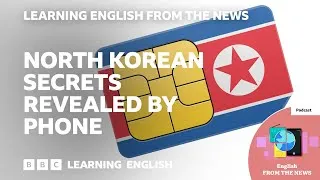아래 영문자막을 더블클릭하시면 영상이 재생됩니다.
번역: Seohyun Park
검토: DK Kim
00:07
According to legend,
in the 27th century BCE,
0
7128
3587
전설에 따르면 기원전 27세기에
00:10
the Yellow Emperor of China charged
his historian, Cangjie,
1
10798
3963
황제 헌원씨는 사관 창힐에게
문자 체계를 개발하라고 명령했습니다.
00:14
to develop a system of writing.
2
14761
1918
00:17
Sitting alongside a riverbank, Cangjie
noticed the imagery that surrounded him.
3
17138
4588
강둑에 앉아 있던 창힐은
주위에 보이던 형상들에 주목했습니다.
00:22
From this, he created
the first Chinese characters.
4
22226
3212
이를 바탕으로 그는
처음 한자를 만들었습니다.
00:25
And that night, the sky rained millet
while ghosts cried,
5
25730
3795
그날 밤 하늘에서 수수가 비처럼
쏟아내리고 망령들이 울었는데
00:29
fearing their actions may now be
condemned by the written word.
6
29525
3045
그들의 죄가 이제는 기록으로 비난받을지
모른다는 두려움 때문이었습니다.
00:32
We can’t say for sure whether
the story is true.
7
32987
2753
이 이야기가 과연 사실인지는
단언할 수 없습니다.
00:35
But the earliest artifacts containing
Chinese characters
8
35740
3003
하지만 한자가 적혀 있는
가장 오래된 유물들은
00:38
date to the Shang Dynasty,
around 1250 to 1050 BCE,
9
38743
4671
기원전 1250년에서 1050년 무렵,
상나라 시대까지 거슬러 올라가며,
00:43
still making it one of the earliest
forms of written language.
10
43664
3087
한자가 최초 문자 언어 중
하나임을 입증합니다.
00:47
Characters etched on ox bones
and turtle shells
11
47293
2711
소뼈와 거북이 등껍질에 새겨진 글자는
00:50
show Shang kings’ writings
to their ancestors,
12
50004
3087
상나라의 왕들이
조상에게 쓴 글을 보여 주며
00:53
discussing everything from agriculture
to the origins of a toothache.
13
53257
3629
농업부터 치통의 원인까지
모든 것을 전합니다.
00:57
And as the legend suggests,
14
57095
1543
전설에서 알 수 있듯이
00:58
these ancient characters
were mainly pictograms,
15
58638
2878
이 고대 문자는 주로 상형 문자,
01:01
or symbols that resemble
what they’re meant to represent.
16
61516
3003
즉, 표현하려는 대상과 비슷한
상징이었습니다.
01:04
Even today, some of the most foundational
Chinese characters remain pictographic,
17
64894
4338
오늘날에도 가장 기초적인 한자 중
일부는 상형 문자로 남아 있습니다.
01:09
like rén (人), which means person,
and mù (木), which means wood or tree.
18
69232
5088
예를 들어 사람 인(人),
나무 목(木)자가 있습니다.
01:14
Some characters are ideograms, or
symbols that represent abstract concepts,
19
74654
4504
어떤 한자는 지사 문자, 즉,
추상적인 개념을 나타내는 기호인데,
01:19
like the numbers yī (一),
èr (二), and sān (三).
20
79158
3295
숫자 일(一), 이(二), 삼(三)을
예로 들 수 있습니다.
01:22
Others are compound ideograms,
21
82620
2002
상형 문자나 지사 문자 두 개 이상을
조합한 회의 문자도 있습니다.
01:24
which combine two or more
pictograms or ideograms.
22
84622
3045
01:27
For example, xiū (休) places
the character for person
23
87875
3545
예시로 휴(休)자를 들 수 있는데
01:31
next to the character for tree
and means to rest.
24
91420
3254
인(人)자를 목(木)자 옆에 배치해
‘쉬다’를 뜻합니다.
01:34
However, most modern-day characters
are known as logograms,
25
94882
3796
그러나 현재 사용하는 대부분 문자는
형성 문자로 알려져 있습니다.
01:38
and are constructed of two components:
a radical component,
26
98678
3503
이는 두 가지 요소로 구성되는데,
하나는 문자의 의미를
가리키는 부수(部首),
01:42
which gestures at the meaning
of the character,
27
102181
2252
01:44
and a sound component,
which hints at its pronunciation.
28
104433
3212
다른 하나는 발음을 알려주는
성부(聲部)입니다.
01:47
And all characters are built
from a variety of strokes,
29
107812
3170
한자는 모두 다양한 획으로 구성되며,
01:50
which are often simplified
to eight basic types.
30
110982
2669
흔히 8가지 기본 유형으로
단순화됩니다.
01:53
There are 214 radicals,
each with its own definition.
31
113860
3670
부수는 214개가 있는데
각각 고유한 정의가 있습니다.
01:57
Some can stand alone, while others cannot.
32
117655
2503
단독으로 사용할 수 있는 부수도 있고
그렇지 않은 부수도 있습니다.
02:00
For instance, the radical rì (日),
written on its own means sun.
33
120366
4171
예를 들어 부수 일(日)은
홀로 쓰일 때 태양을 의미합니다.
02:04
It’s also used in characters
with sun-related definitions,
34
124787
3045
또 새벽 효(晓)처럼 태양과
관련된 뜻을 가진 문자에 사용됩니다.
02:07
such as xiǎo (晓) meaning dawn.
35
127832
2336
02:10
The radical cǎo (艹), on the other hand,
never stands alone,
36
130459
3295
반면에 부수 초(艹)는
단독으로 쓰일 수 없지만
02:13
but can be found within characters related
to grass and plants,
37
133754
3045
꽃 화(花)자와 같이 풀이나 식물과
관련된 문자에서 볼 수 있습니다.
02:16
like huā (花) meaning flower.
38
136799
1919
02:19
And the radical shuǐ (水), meaning water,
always stands alone,
39
139010
3712
그리고 부수로 쓰이는 물 수(水)는
항상 단독으로 쓰이지만
02:22
but has a variant (氵) that is used when
it’s part of more complex characters
40
142722
3712
좀 더 복잡한 문자에 붙을 때
사용하는 변형(氵)도 있습니다.
02:26
like hé (河), meaning river.
41
146434
2085
이렇게 강 하(河)자에 사용하는 거죠.
02:28
Radicals can appear
in different positions:
42
148686
2211
부수는 다양한 위치에 나타날 수 있는데
02:30
to the left, to the right, above, below,
43
150897
3503
왼쪽, 오른쪽, 위, 아래에 있거나
02:34
or even surrounding the rest
of the character.
44
154400
2294
문자 전체를 감쌀 수도 있습니다.
02:36
There are many more sound components
than radicals,
45
156986
2711
성부는 부수보다 훨씬 많아
수천 개에 달한다고 추정됩니다.
02:39
with estimates ranging in the thousands.
46
159739
2169
02:42
Similar sounding words often share
the same sound component,
47
162074
3212
발음이 비슷한 단어는 같은 성부를
공유하는 경우가 많으며,
02:45
and their radicals help shed light
on their meanings.
48
165286
2544
같이 있는 부수는
문자의 뜻을 밝혀줍니다.
02:47
Take fēng (峰) and fēng (蜂).
49
167830
1794
봉(峰)과 봉(蜂)을
예로 들어 보겠습니다.
02:49
The radical shān (山) means mountain,
50
169790
2044
부수인 산(山)자는 첫 문자의 정의인
산 정상을 시사합니다.
02:51
which hints at the first
character’s definition: summit.
51
171834
3003
02:55
The radical in the second character,
chóng (虫), means insect,
52
175004
3545
두 번째 문자의 부수 충(虫)은
곤충을 의미하고
02:58
and together with the sound component
means bee.
53
178674
2753
성부와 합치면 꿀벌을 의미합니다.
03:02
While many words in Chinese sound similar,
just like in other languages,
54
182094
3712
다른 나라 언어와 마찬가지로
많은 중국어 단어가 비슷하게 들리지만
03:05
context or tonality helps
clarify their meaning.
55
185973
2920
문맥이나 음조는 의미를 명확히
이해하는 데 도움이 됩니다.
03:09
Yet how each character is pronounced
depends on dialect,
56
189101
3587
하지만 각 글자의 발음은
지역 방언에 따라 다르며,
03:12
which varies across the country.
57
192688
1961
방언은 나라 전체에서 다양합니다.
03:14
So conversations in Chengdu may sound
vastly different than in Nanjing,
58
194899
4546
따라서 청두에서 들리는 대화는
난징에서 들리는 대화와 다르지만
03:19
but in both places,
the written language is the same.
59
199445
2920
두 곳에서 쓰는 문자는 동일합니다.
03:22
And unlike the romance languages,
60
202698
1669
로망스어군과는 달리 중국어에는
성별 명사나 동사 활용이 없습니다.
03:24
Chinese has no gendered nouns
or verb conjugations.
61
204367
3003
03:27
So the character chī (吃), meaning to eat,
remains unchanged
62
207411
3671
따라서 먹을 흘(吃)자는
주어가 자신이든,
03:31
whether the subject is yourself,
a coworker, or a lesion of fearful ghosts.
63
211082
4754
동료든, 무시무시한 귀신떼든
상관없이 형태에 변화가 없습니다.
03:36
To indicate the past, a marker
like le (了) can be added.
64
216045
3545
과거를 나타내려면 료(了)자와
같은 표시를 추가할 수 있습니다.
03:39
So “I eat bread” becomes “I ate bread.”
65
219757
2794
그러면 ‘빵을 먹는다’가
‘빵을 먹었다’가 되는 거죠.
03:42
Over the years, the Chinese writing
system has undergone many changes.
66
222927
3962
시간이 지나면서 중국어 문자 체계는
많은 변화를 겪었습니다.
03:47
As characters went from being
etched in bone, to cast in bronze,
67
227014
3379
문자가 뼈에 새겨지다가
청동으로 주조되고
03:50
to brushed on paper,
68
230393
1334
붓으로 종이에 쓰는 식으로 바뀌면서
문자는 그에 따라 바뀌어 왔습니다.
03:51
their script has evolved along the way.
69
231727
2002
03:53
In the 1950s and 60s,
the Chinese Communist Party introduced
70
233896
4004
1950년대와 60년대에 중국 공산당은
03:57
new simplified versions
of the traditional characters,
71
237900
2711
전통 번체를 단순화한
새로운 형식, 간체자를 도입해서
04:00
which are now standard in China,
72
240611
1794
현재 중국에서 표준으로 사용되고 있지만
04:02
though traditional characters remain
in use in Hong Kong and Taiwan.
73
242530
3336
홍콩과 대만에서는 여전히
번체를 사용합니다.
04:06
And while the Chinese character
system may seem unique,
74
246033
2628
한자 체계가 중국에만
고유한 것으로 보일 수 있지만,
04:08
its development greatly influenced
the spoken languages
75
248786
2878
그 발전은 이웃 국가들의 음성 언어와
문자 체계에 큰 영향을 미쳤습니다.
04:11
and writing systems of its neighbors.
76
251664
1918
04:13
For example, around 60% of Japanese
dictionary entries are kanji—
77
253833
4337
예를 들어, 일본어 사전 항목의
약 60%는 한자 일본어로,
04:18
characters that originated in Chinese
or were created from its elements.
78
258337
4129
중국 한자에서 유래했거나
중국 한자의 요소를 빌려왔습니다.
04:22
With a 3,000 year history,
79
262550
2085
3,000년 역사를 자랑하는 한자는
04:24
Chinese characters have and will
continue to leave their mark.
80
264719
3753
그 흔적을 남겨왔고 앞으로도
계속 자취를 남길 것입니다.
New videos
Original video on YouTube.com
이 웹사이트 정보
이 사이트는 영어 학습에 유용한 YouTube 동영상을 소개합니다. 전 세계 최고의 선생님들이 가르치는 영어 수업을 보게 될 것입니다. 각 동영상 페이지에 표시되는 영어 자막을 더블 클릭하면 그곳에서 동영상이 재생됩니다. 비디오 재생에 맞춰 자막이 스크롤됩니다. 의견이나 요청이 있는 경우 이 문의 양식을 사용하여 문의하십시오.







